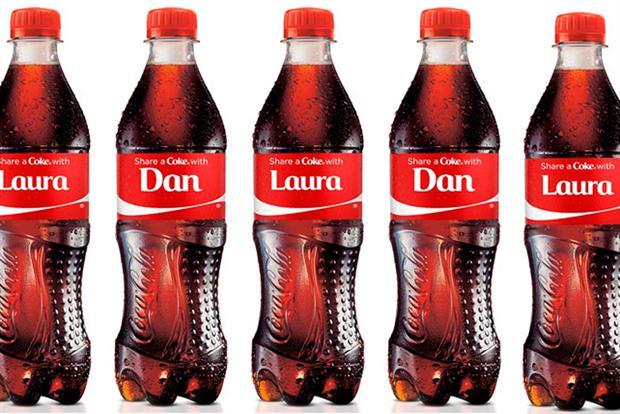Introduction
The presentation of appealing and attractive products to customers is a factor that cannot be exempted in the marketing norms. Essentially, these attributes are facilitated by appearance and its segmentation through the use of a unique feature that targets customers with a distinct taste.
There are various concepts and methods applied to reach organizational marketing goals. This essay will explain the following concepts and methods; semiotics, signs, denotation, and connotation. Then, I will analyze my advert on the quality. Following this, I will explain how I subverted this advert and how it criticizes the problem of quality in society.
Theories
Marketing can be applied through the creation of meaning to a product using semiotics, signs, denotations, and connotations. These four techniques are imperative to the advertisement strategies as they form a baseline for marketing products. The idea is instilled into the target customers who make purchases basing on the signs and meaning delivered by these products.
These styles of advertisements lead to the high overall growth of product sales. Bitoun defines semiotics as the study of symbols, signs, and significations (112). In advertisements, it applies where these factors are applied to suggest aspects to the customers. Signs are the entries placed to represent the existence of another (Gallant 107). They are used as short indications either to enhance customer remembrance or act as a trademark.
A connotation is an idea invoked by a word together with its real or basic meaning. The suggested and literal meaning might equivalent. On the other hand, denotation is the real or basic meaning of a word as contrasted to the ideas it proposes (Tanaka-Ishii and Ishii 398).
Denotation can be exemplified through the icon presentation of the product through its image. For instance, a coke image is used to advertise a coke beverage. It can also appear as an index representing through relationships. Finally, denotation can involve conventional representation like logos, visual camera effects, fonts, and angle of pictures (Woodall 1291).
Original Advert
Figure 1 shows the brand name Coca-Cola written in a similar and unique way. The writing of this word serves as a logo for the company selling the product. The image of the coke beverages in the advertisement is a direct representation. They have also been packed together and in multiples as part of the denotation styles. However, the connotations inform that these drinks are biased in line of gender and relationships.
The use of the male name and female name might develop the habit of dislike from people. They might tend to understand that coke is for couples. Otherwise, they may seek relevance through becoming choosy. In this regard, customers can search for beverages with their names so as every aspect of the suggestion is true and practical. In essence, the figure shows the names Dan and Laura as huge words.
Therefore, a person assumes that the name of the coke is Dan or Laura, whereas the literal meaning is distinct. A closer glance to the picture reveals the phrase ‘share coke with Dan or Laura’. This phrase indicates that it is the coke being taken with someone else. The phrase ‘share coke with’ has been reduced to detract attention so as the name is prioritized.

Figure 1: Original advert
New Meaning of the Subvert
Modification of the original advert with names of individuals is vital to facilitate competitiveness and acceptance of coke by the people. Apart from ensuring quality production of the beverages, the presentation should have meaning to the society or the people taking it. Therefore, the simple names of people written on the coke do not provide multidimensional conviction to the people. However, the new advertisement does not include the names of the people as initially.
It comprised of words participating in developing a better society with quality attributes as suggested by coke. I removed these names and replaced them with better words without biases. They promote various vital elements that a community may apply to gain economic prowess and stability. Essentially, the use of terms such as honesty creates suspense at first glance. A person may want to know what coke has to offer about honesty.
In this regard, the customer may take an interest in the coke and buy it. The use of people’s names might not have great relevance to people. However, the introduction of new techniques, including the use of values imperative in a society may be a good campaign against other societal vices.
They assist the society by encouraging unity, love, peace, chastity, honesty, hard work, and willingness, among others. The subvert is drawing people’s attention to the virtue of unity as boosted by the coke. The words are attractive and appealing to the customers since they represent good virtues.

Fugure 2: Subvert advertisement
Conclusion
This essay has provided theoretical definitions of the concepts and method of semiotics, signs, denotation, and connotation. This was followed by an analysis of an advert on coke. The essay first looked at the denotative meaning of the ad and then thought about its connotative meaning. Finally, the essay discussed how the subvert had changed the meaning of the advert, now drawing attention to the problem of quality in society.
Works Cited
Bitoun, Catherine. “Semiotics, as a tool to understand and take action.” The Marketing Review 6.2 (2006): 111-121. Print.
Gallant, Serge, Loriann Williams, Maryanne Fisher, and Anthony Cox. “Mating strategies and self-presentation in online personal advertisement photographs..” Journal of Social, Evolutionary, and Cultural Psychology 5.1 (2011): 106-121. Print.
Tanaka-Ishii, Kumiko, and Yuichiro Ishii. “Icon, index, symbol and denotation, connotation, metasign.” Semiotica 2007.166 (2007): 393-407. Print.
Woodall, Tony. “New marketing, improved marketing, apocryphal marketing: Is one marketing concept enough?.” European Journal of Marketing 41.11/12 (2007): 1284-1296. Print.